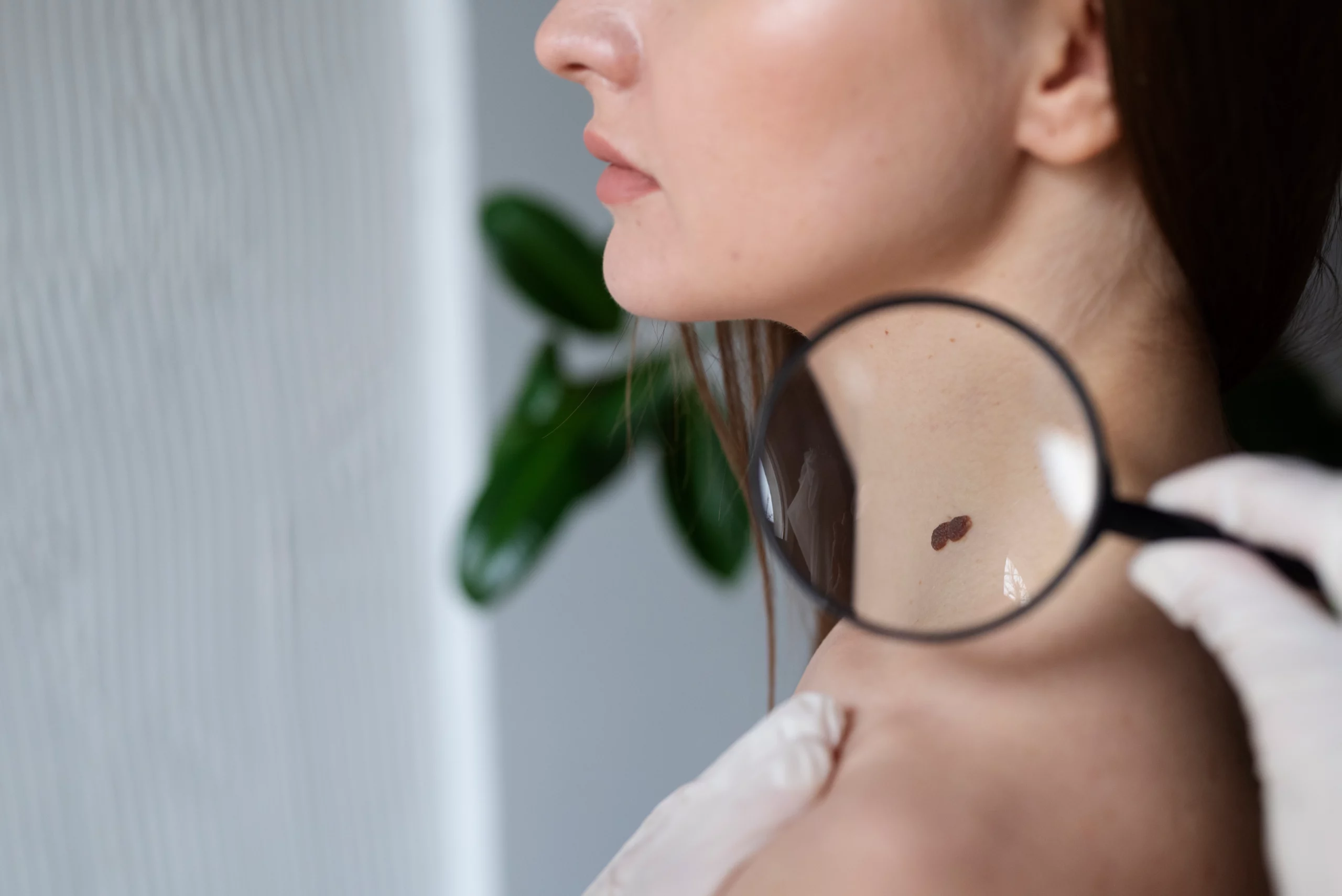When it comes to melanoma, early detection can make all the difference. Melanoma is the most dangerous form of skin cancer, but recognizing warning signs early gives patients the best chance for effective treatment. One of the most trusted tools used by dermatologists and skin cancer organizations around the world is the ABCDE method.
In this article, we break down the ABCDEs of melanoma with visual references and guidance sourced from leading dermatology authorities. Please note: this is not medical advice. If you notice any suspicious skin changes, always consult with a licensed dermatologist.
This article is for educational purposes only and should not be used to diagnose skin cancer. Always seek a medical evaluation from a board-certified dermatologist if you have any concerns about your skin.

A is for Asymmetry
Healthy moles are usually symmetrical. If you draw an imaginary line through the center, both halves should match. If one half looks different from the other, this could be a warning sign of melanoma.
Visual cue: One side of the spot looks noticeably different from the other.
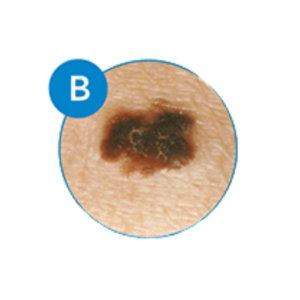
B is for Border Irregularity
Benign moles tend to have smooth, even borders. In contrast, melanomas often have jagged, scalloped, or poorly defined edges.
Visual cue: The edges of the mole appear blurry, uneven, or notched.
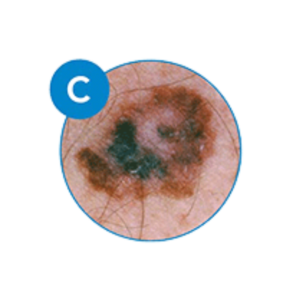
C is for Color Variation
A non-cancerous mole typically has one uniform color, usually brown. Melanomas may include multiple shades of brown, black, or even patches of red, blue, or white.
Visual cue: The spot contains more than one color or an uneven distribution of pigment.
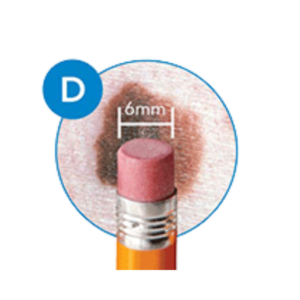
D is for Diameter
While not all large spots are dangerous, melanomas are often larger than 6 mm (about the size of a pencil eraser) when diagnosed.
Visual cue: Any mole larger than 6 mm or growing in size should be checked.
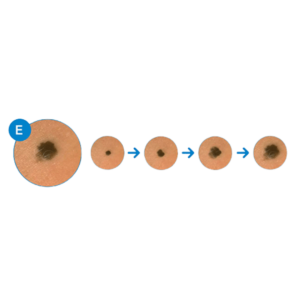
E is for Evolving
Perhaps the most important factor: change. If a mole or skin lesion changes in size, shape, color, or elevation over time, or begins to itch, bleed, or crust, it warrants evaluation.
Visual cue: The spot doesn’t look the same as it did a few months ago.
When to See a Dermatologist
Milia, freckles, and benign moles can all appear similar to melanoma at first glance. That’s why dermatologists stress the importance of professional evaluation. If you observe any of the ABCDE signs, or notice a new spot that looks different from the others, schedule a skin exam promptly.
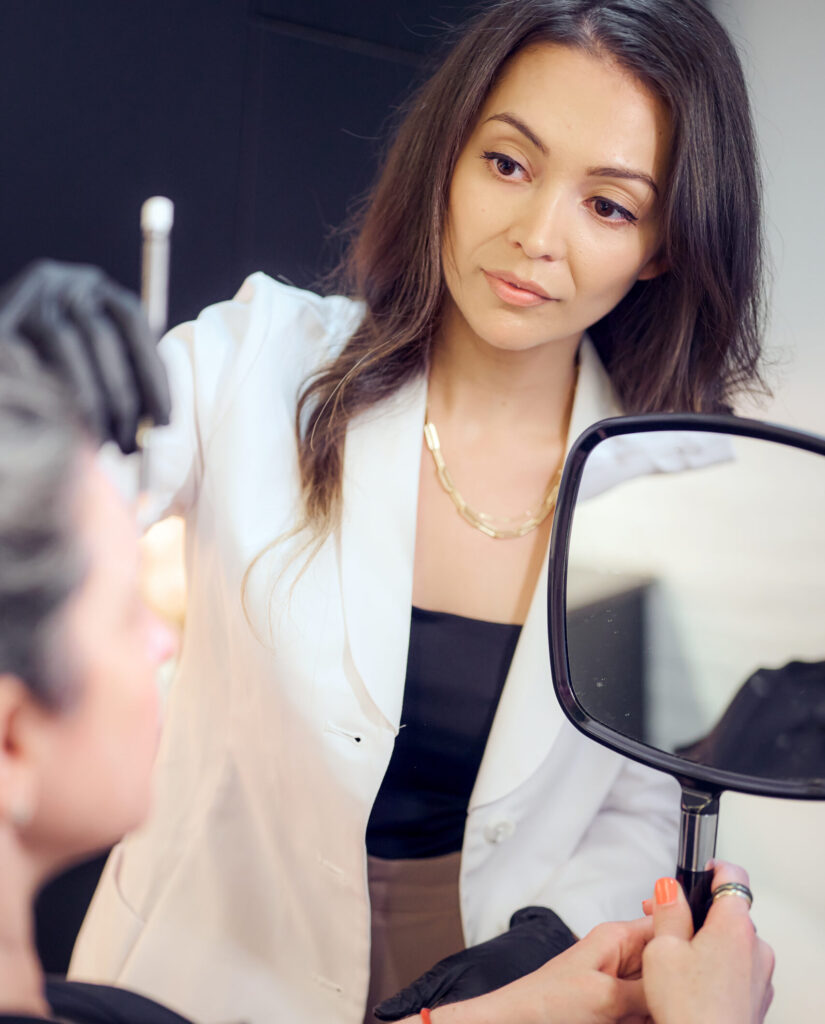
Medical & Cosmetic dermatology in Hudson Yards
From advanced medical treatments to cutting-edge cosmetic procedures, Hudson Derm offers comprehensive care tailored to your skin’s needs—all in the heart of Hudson Yards.
